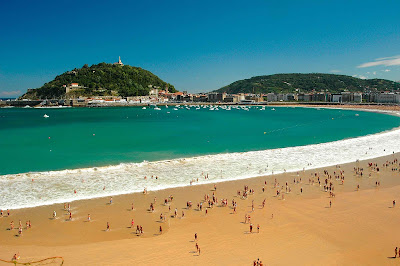 |
| Montjuic: |
With 1,619,337 inhabitants in 2010, after Madrid is the second most populous city in Spain. The metropolitan area of Barcelona, including Barcelona Urban Region has 5,029,181 inhabitants in 2011.
Is Located on the shores of the Mediterranean Sea, 120 km south of the Pyrenees mountain chain and the border with France. It has been the scene of various world events that have given international exposure. The most important have been the Universal Exhibition of 1888, the International Exhibition of 1929, the Summer Olympic Games 1992 and the Universal Forum of Cultures 2004. It Hosts the Secretariat of the Union for the Mediterranean.
Barcelona is recognized as a global city for its cultural, commercial, financial, and tourism. Has one of the largest ports in the Mediterranean and is an important point of communication between Spain and France, due to motorway connections and high-speed train. It's a very touristy town with a Mediterranean climate.
Barcelona Trade Fair
The Fira, Barcelona trade fair, organized numerous exhibitions, shows, congresses and fairs for professionals, some of which are among the first in the world, such as the Mobile World Congress is the world's largest in its sector, the urban fashion fair Brandery. These and other shows makes it one of the most important fairs in Europe and first in Spain with more than 3.5 million visitors annually, also generate a great activity for hotel and restaurant sector with the incentive of uniformly distributed throughout the year.
Places: “La Sagrada Familia”, “la Pedrera” y “el Pueblo Español”, “Montjuic”, “Barcelona Villa Olímpica”, “Barrio gótico”, “Plaza Real”.












